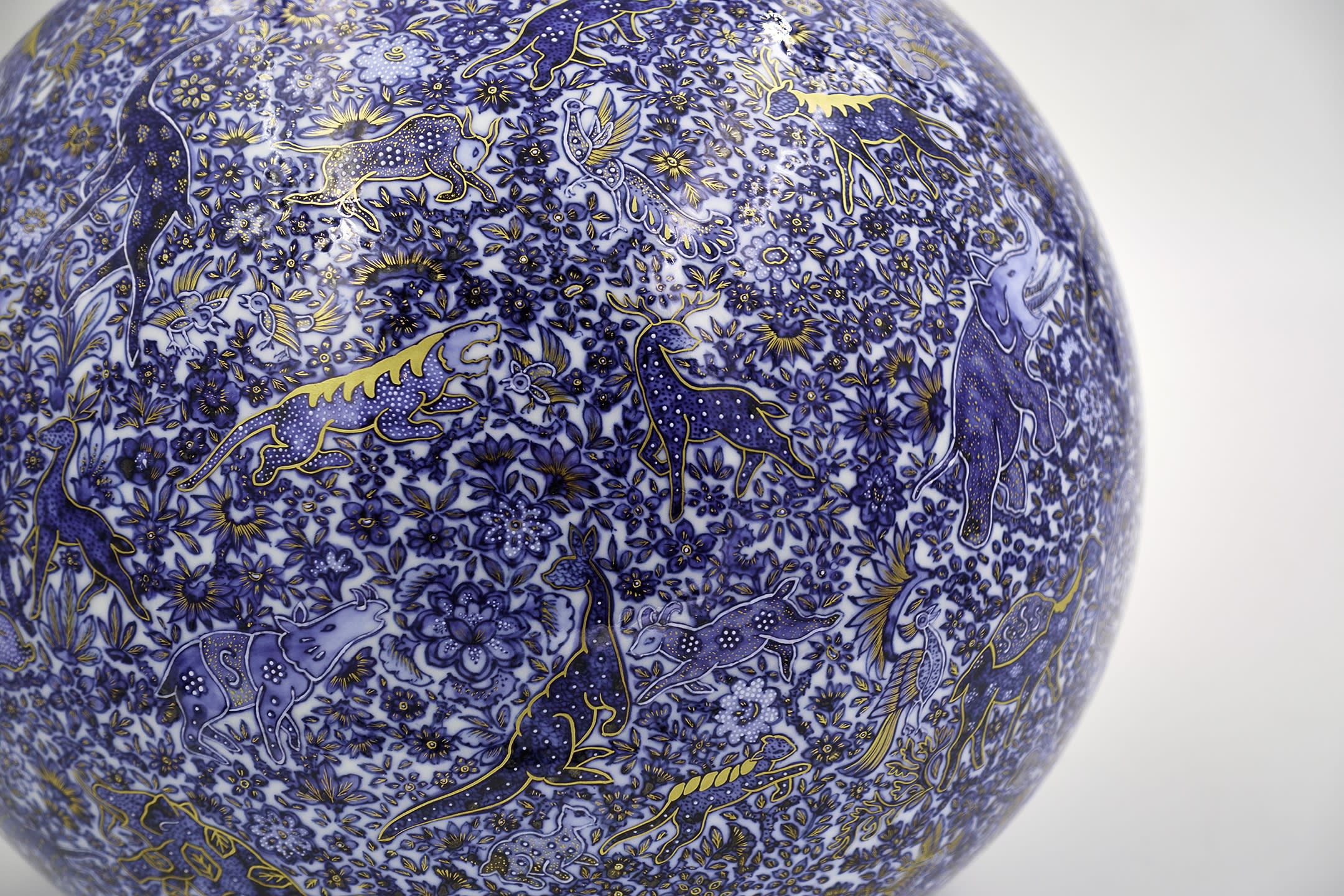
China painting was first developed in China during the 7th and 8th century. Many different clay bodies can be subject to the same techniques of China painting, from porcelain to earthenware and stoneware.

Yuki Hayama, Applying underglaze onto bisqueware
Using a combination of both overglaze, underglaze, and different pigments, and clay bodies, the final and overall outcome can be quite different!
The main types of China painting are underglaze and overglaze. These two techniques can be used separately or together to create different and strong visual narratives.
Underglaze Painting
underglaze painting is when ceramic pigments (paint) is applied to an unglazed, bisque fired object. This bisque fired object is porous and readily absorbs the pigments that are painted on. After the underglaze design, the object is then covered with glaze and fired. The downside to this technique is that once the underglaze is applied, it is very difficult to remove. Many master potters working with this technique therefore memorize their patterns before painting, some even use wax resist, a substance that burns off during firing, to make sure their lines are crisp and clean.

Yuki Hayama, Underglazing a large plate
Cobalt oxide, blue when fired, is commonly used for underglaze painting as the property can withstand higher temperature firings.
Because of these high temperatures and how different compound minerals react to different firings, usually, a blue underglaze design is introduced before additional colors are through overglaze. Ceramic works are first fired to the highest temperature in order to mature the clay body, then with subsequent firings of much lower temperatures, the additional colors are applied through overglaze.
Overglaze Painting
Overglaze paints are made of mineral compounds and flux. The ground up powders are then mixed with an oil and brushed onto a glazed object. At this stage, the ceramic object has already gone through one initial glaze firing and is no longer porous unlike in the underglazing stage.

Detail of one of Yuki Hayama's Jars
Since the clay body is no longer porous, the overglaze glides on the surface smoothly, allowing for a variety of experimentation for the artist. The overglaze can be applied in washes, like watercolor, and if a mistake is made, the artist can use a wet brush to remove it.
Depending on the style of the artist; the flexible techniques of underglazing and overglazing can be employed to create intricate and countless designs and compositions.
